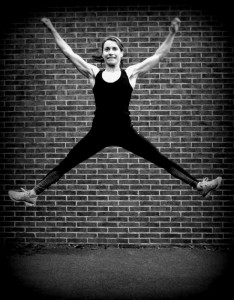Metafit for the midlife mumma?
Are you a 40+ female and looking for a new way to exercise that is short on time but big on results? If yes…read on!
If you’ve clicked on this post I’m going to presume you meet the following criteria:
- Female
- 40+
- Currently exercising but not seeing results for the time or money you are devoting to it OR
- Not exercising but would love to/need to start, but you don’t like gyms, and yoga and/or pilates don’t float your boat either OR
- You feel a little intimidated to sign up to boot camp run by a 20 year old male trainer alongside his footy team-mates, but you love the idea of working hard and feeling the buzz after a tough session
If any of the above sound like you, then please read on…
OK, so I’m no stranger to pushing my body (& mind) to do heavy-duty physical things…in fact I met my hubby whilst sharing the chin-up bar at the gym!…so when I was introduced to METAFIT it was love at first sight! But doing old-school bodyweight exercises in short, intense bursts for 20 minutes until your legs are burning and you’re gasping for breath isn’t for everyone…or is it?
For the past 18 months I’ve been taking 7 metafit sessions a week. The overwhelming majority of my clients are women, and most of them would be north of 40 (or pretty close to). So why is metafit so attractive/addictive to the 40+ woman?
Here’s what I think:
It’s the RIGHT type of exercise for this age group (and I fit into this age bracket too). What do I mean by RIGHT type of exercise? Its INTENSE but SHORT, you feel ENERGISED afterwards and you GET RESULTS.
HOW? Because you:
- Get HOT
- Get SWEATY
- Get OUT OF BREATH
- Feel the LACTATE BURN in your muscles
- Work in SHORT BURSTS
- Work until you FEEL TRULY CHALLENGED and NEED TO REST
- Use your own BODYWEIGHT – yep, the same weight that you drag around each day so you may as well use it!
- FEEL yourself getting STRONGER and FITTER as you master exercises you thought a 40+ woman can’t/couldn’t/shouldn’t do! (Floor to sky tuck jump anyone?)
WHY should a 40+ woman do metafit or HIIT?
- BONE HEALTH – weight bearing and impact exercise are essential for bone health and maintaining bone mass at this critical phase of life. After the age of about 30, bone loss starts to outpace bone gain. In addition, the decline in oestrogen production that also occurs as we age has a negative impact on bone remodelling activity. Bone mass is reactive, not proactive. Bone must experience stress ie. load and impact, in order to remodel. Less stress = less remodelling = loss of bone mass.
- To build LEAN MUSCLE MASS (notice I say mass and not size) and therefore INCREASE YOUR METABOLISM – muscle tissue = metabolic tissue. The more (dense) muscle you have the higher your metabolic requirements – your body needs & will use more energy whilst at rest compared to someone who has less lean muscle.
- The high intensity of metafit promotes EPOC (excess post-exercise oxygen consumption) or the afterburn effect. Our bodies want to return to their resting state, but after being worked so hard during high intensity exercise, it takes considerable energy (calories) to do this. Even though the actual workout is only 30 minutes, the after effects are felt for many hours (up to 48hrs) afterwards.
- To MAINTAIN or INCREASE MOBILITY, BALANCE & POSTURE – the whole body functional nature of the exercises used in metafit see you getting up and down from the floor, moving forwards, backwards, sideways, using your arms and legs to push, pull, bend, lift, jump, hold etc through a full range of movement in all joints. At the same time your core & postural muscles are working to stabilise your torso and maintain posture. And the resistance is your own body – the same weight you drag around all day – nothing more, nothing less.
- Check the strength and integrity of your CORE & PELVIC FLOOR. If you find when you do burpees, sprints or jumps and pee your pants at ANY level…fantastic! This is 100% proof that your core/pelvic floor isn’t up to par for this type of training…yet. If this is you, please seek assistance from a specialised women’s health physiotherapist or your GP ASAP. Just like any muscles, these muscles can be trained to increase their strength and tone and your ability to control them. (Sometimes we need to experience a little of what we don’t want to do something about it!)
Are you a metafit or HIIT convert? How do you find it?
Curious to try? Come and join me at Heart Body & Soul in Glen Iris. You’ll find the timetable here. If you live a little too far away to visit me, search the Metafit Australia website for a coach near you.

